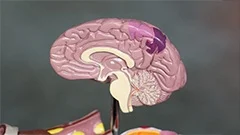Introduction
Organelles are specialized subunits within eukaryotic cells that perform specific functions essential for cellular processes. The study of these intracellular organelles is crucial to understanding the functioning and regulation of a cell, as well as its interaction with other cells in multicellular organisms. This course aims to provide an in-depth exploration of various techniques used to investigate different types of organelles within eukaryotic cells.
Mitochondria
Mitochondria are vital organelles responsible for generating energy through cellular respiration, and they play a crucial role in cellular metabolism.
Techniques for Studying Mitochondria
- MitoTracker Staining: This technique involves the use of fluorescent dyes that selectively bind to mitochondria, allowing their visualization under a fluorescence microscope.
- Isolation and Purification: Mitochondria can be isolated and purified from eukaryotic cells through various methods such as centrifugation or density gradient centrifugation. Isolated mitochondria can then be used for biochemical analyses, such as measuring respiratory activity or enzyme assays.
- Transmission Electron Microscopy (TEM): This technique provides high-resolution images of mitochondria, revealing their ultrastructure and internal organization.
- RNA Interference (RNAi): By silencing specific genes encoding for mitochondrial proteins, RNAi can be used to investigate the function of these proteins within the mitochondria.
Nucleus
The nucleus is the main control center of the eukaryotic cell, housing most of the DNA and regulating gene expression.
Techniques for Studying the Nucleus
- FISH (Fluorescence In Situ Hybridization): This technique allows for the visualization and localization of specific genes or regions within the nucleus using fluorescent probes.
- Chromatin Immunoprecipitation (ChIP): ChIP assays can be used to investigate protein-DNA interactions within the nucleus, providing insights into gene regulation.
- Nuclear Extraction and Fractionation: These techniques allow for the isolation of nuclear proteins and organelles for further biochemical analysis or functional studies.
- Live Cell Imaging: By using fluorescent tags or markers, it is possible to observe changes in the nucleus over time, such as chromatin dynamics during cell division or gene expression regulation.
Endoplasmic Reticulum (ER)
The ER is a dynamic organelle responsible for protein synthesis, folding, and modification, as well as lipid biosynthesis.
Techniques for Studying the ER
- Ribosome Profiling: This technique allows for the identification of mRNAs associated with ribosomes within the ER, providing insights into protein synthesis and localization.
- Immunogold Labeling: By using gold-conjugated antibodies specific to ER proteins, this technique can be used to visualize and quantify ER structures within cells.
- ER Ca2+ Sensors: These sensors allow for the measurement of calcium levels within the ER, which play a crucial role in signaling pathways.
- Golgi Apparatus Co-localization Studies: By co-staining with markers for both the ER and Golgi apparatus, it is possible to investigate the interplay between these organelles during protein trafficking.
Lysosomes
Lysosomes are membrane-bound organelles that contain digestive enzymes responsible for degrading cellular waste materials.
Techniques for Studying Lysosomes
- Acridine Orange Staining: This technique allows for the visualization and quantification of lysosomes within cells using fluorescence microscopy.
- Lipid Raft Isolation: By isolating lipid rafts from cell membranes, it is possible to investigate the role of lysosomes in cell signaling pathways involving these specialized regions of the plasma membrane.
- Autophagy Studies: Autophagy is a process by which cells degrade and recycle their own components. By monitoring autophagic flux and lysosomal activity, it is possible to study this essential cellular process.
- Therapeutic Approaches: Lysosomes can be engineered to deliver drugs or gene therapy vectors to specific cell types, making them a promising tool in the treatment of various diseases.
Conclusion
The study of organelles within eukaryotic cells is essential for understanding their functions and interactions, as well as their roles in various cellular processes. The techniques discussed in this course provide valuable insights into these intracellular structures and their importance to cell biology.
MCQ: Test your knowledge!
Do you think you know everything about this course? Don't fall into the traps, train with MCQs! eBiologie has hundreds of questions to help you master this subject.
These courses might interest you
Create a free account to receive courses, MCQs, and advice to succeed in your studies!
eBiologie offers several eBooks containing MCQ series (5 booklets available free for each subscriber).




